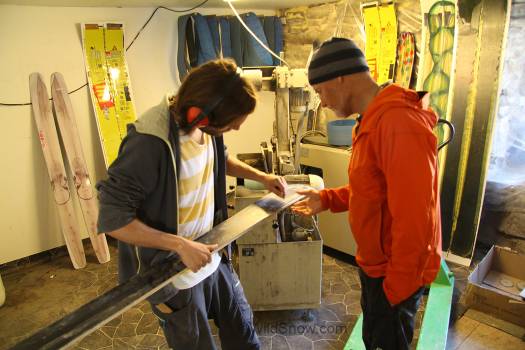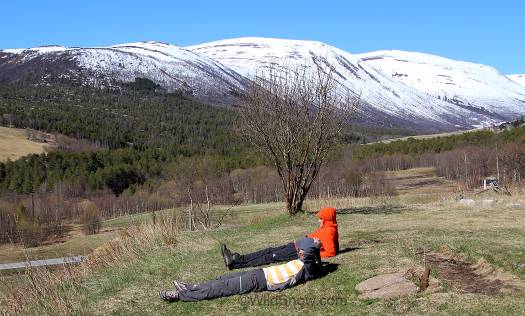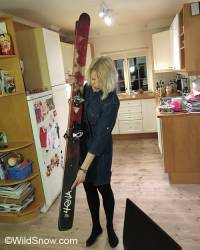
Fri Flyt magazine art director Eva Camilla Brandt received Evi skis for her wedding present, with customized graphics. As the only metal edged skis truly made in Norway, as well as being a performer, the Evi skis are quite popular.
Jotunheimen intro tour done (hope to return some day). After a quick change to civilization clothing, I climb into the Swede’s (Toby’s) Toyota Tundra for the three hour drive north through Norway to the village of Oppdal (where I’ll eventually meet up with Lisa). Beyond Fritz Barthel’s Pinzgauer, that’s the first full size vehicle I’ve been in on the east side of the big pond.
What a relief to throw my gigantic Dakine double ski bag into a truck bed instead of having three large German men squeeze it into a taxi trunk. Another myth bites the dust — I thought everyone over here drove minis.
Oppdal is a ski village. A wide and somewhat tall hill rises above town, boasting multiple ski lifts and a bunch of sidecountry. Head farther, and you get a few hundred square miles of ski touring terrain.
In Oppdal, Tobby hands me off to an unassuming guy with a mop of dark hair and a work jacket that looks like it’s been caught in a ski tuning machine. Despite his rough hewn appearance, ski maker Endre Hals eyes glint with revolutionary intelligence. He’s got good English, and likes conversation.
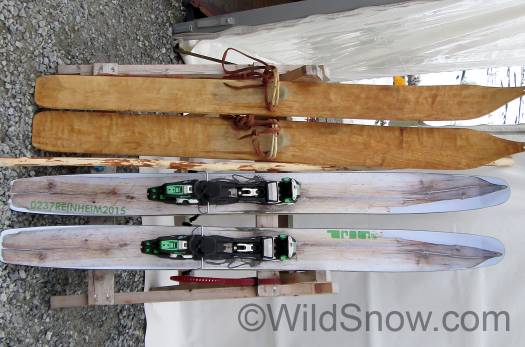
Replica of prehistoric skis at top, and the ‘Prog’ brand skis at the bottom using ancient dimensions as well as a graphic from one of Norway’s oldest discovered skis. The “Reinheimskia” depicted on the topskins and replicated in the wood planks is 1300 years old. They were found last year. The skis were a very unique find because the whole skis were intact, with bindings, preserved perfectly in ice. If you’re traveling in Norway, the old skis will be exhibited in Norsk Fjellmuseum from this summer: http://fjell.museum.no/
Riding in Endre’s nice Skoda Octavia Scout west to his home and Eviski factory, the discussion ranges from how poor Norway once was (it’s said they had to make a law against eating tree bark, lest the country was deforested), to how the latest theories of prehistoric skiing are saying it’s nearly certain wider skis were used to skim down powder hills, attacking herds of reindeer at speeds before they could scatter from human powered projectile weapons. Which is why, according to Endre, he is making Evi (and his taylor made Prog) skis that are predominantly wood, at widths that hark back several thousand years as well as fitting neatly into today’s 100+ millimeter form factor for freeride or ski touring.
Let’s take a little tour of the only steel-edged ski production in Norway (yes, hard to believe, but true.)
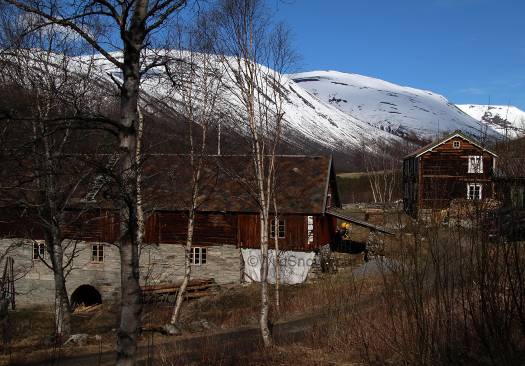
Endre purchased this classic Norwegian farm a few years ago. He’s got the ski factory set up in the barn to left, and he’s been modernizing the house. When I visited they were in a remodeling phase at the factory so I didn’t get any full production photos, but nonetheless we found plenty of interesting items to talk about. Ski lifts are about 15 minutes a way, ski touring literally out the door.
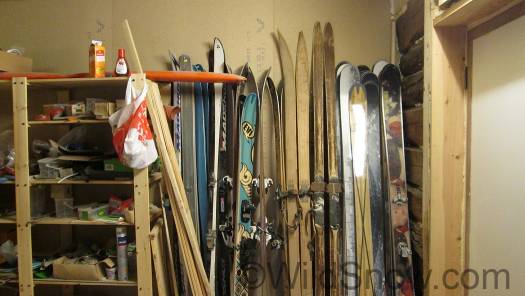
Endre is big into history; he keeps quite a few pairs of ancient skis around for inspiration. These things were probably owned by Sondre Norheim himself.
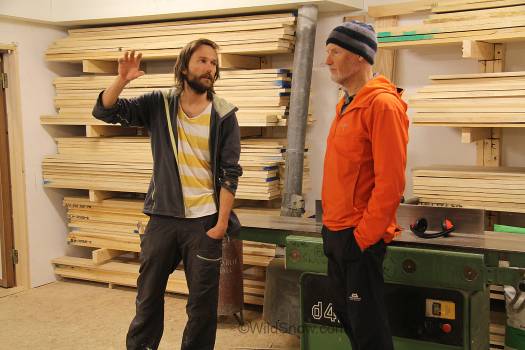
Core blanks, before machining. Evi and Prog skis use various woods, all local. This is where I mention that Endre makes no excuses for wood. Unlike skis with all sorts of sidewall tricks and lots of fiberglass, these are essentially wood skis with just enough carbon and resin to keep them from breaking. There is nothing man made, or in nature, that is a substitute for wood — it makes for SWEET skis and I’ve got testimony from scores of Norwegians who were born skiing that Evi planks are it.
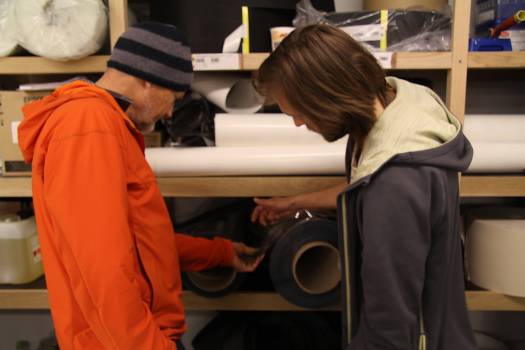
Checking out a big roll of carbon fiber. Endre’s crew makes their own pre-preg, which they store in a freezer to prevent premature resin reactions.
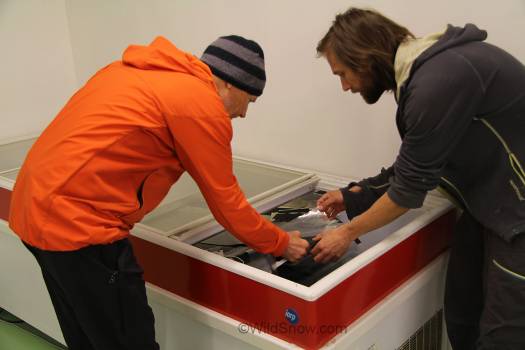
Checking out the prepreg in the ice cream freezer. Not sure if you readers know this, but ice cream is very popular in Norway, year-around, so ice cream freezers are readily available to be converted to ski factory equipment, or so I assume.
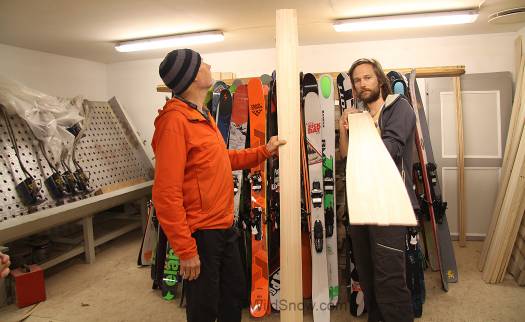
I got a kick out of hearing that years ago Norway imported Sitka spruce from Alaska. The trees by Endre’s account have become somewhat of a nuisance as they grow dense, are creeping up above timberline, and are not logged enough to control them. But when dense they grow straight with fewer branches on the stem, making for some very strong and dimensionally stable core material. I eyeballed this blank which had been on the stack for a while; it appeared as straight and true as the industrial jointer table there in the core shop.
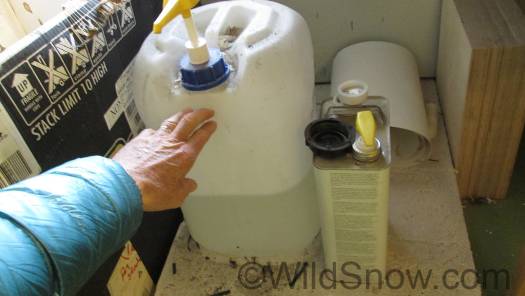
No matter the prehistoric roots of skiing, resin is required. I liked this industrial sized epoxy bottle. Install one of these at WildSnow, and even my grandchildren will never have to shop for epoxy.
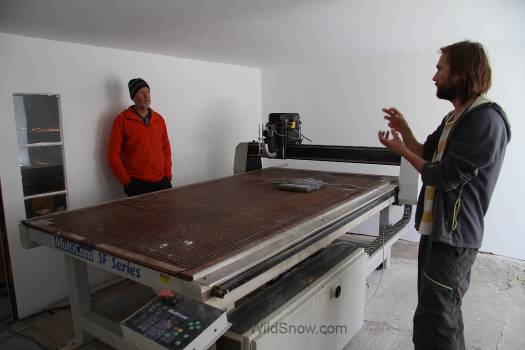
The cores are shaped on this computer-controlled cutting table, really just a computer controlled router.
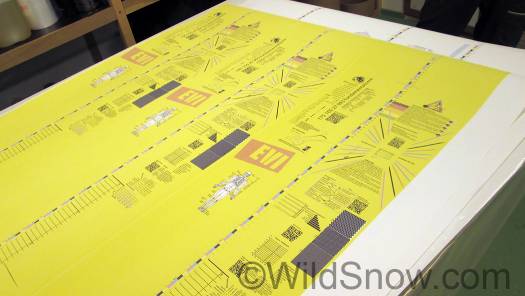
Graphics re topskins, no big deal here other than the fact these are by no means cap type skis, nor do they have a sidewall separate from the core material. Instead, the wood core is exposed on the sides, impregnated with resin to prevent water intrusion problems. For durability in the case of tip crossing freeriders, a small rod of HDPE is glued under the topskin along the top edges. Overall, I found Endre’s methods to be elegantly simple. Only concern is how the exposed wood sides will hold up to moisture. Endre claims they’re fine but that you don’t want to be leaving the skis submerged in a lake for any extended periods.
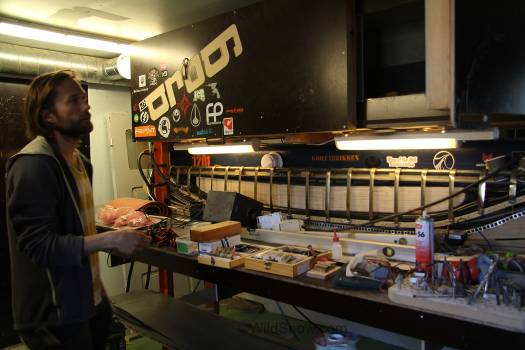
Believe. This is where it all happens. The innovative foundation of Endre’s business is a ski mold and press with adjustable rocker and camber angles. Endre began work on this concept while still in school getting his degree in industrial design (let college pay for ski press, good business plan). His ability to create skis with any specified curves has resulted in other companies contracting out for test demos. Endre told me he’s doing less and less of that in favor of producing his own special concepts. I’ll not go into details on the press system, but it looked pretty cool, but not without growing pains, however, like the time it caught fire and filled the factory with deadly polyurethane combustion gas (PU is used for the airbag pressure system in the press, and the contraption is heated to cure the resin.)
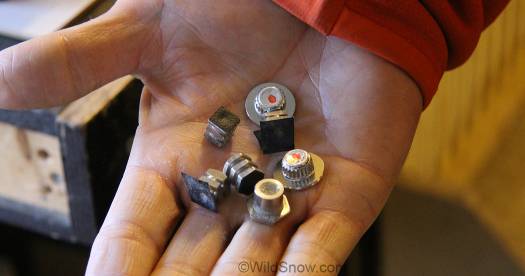
Endre’s solution to binding mount woes is to do all skis with inserts for specific binding brand and mount position. These are not Micky Mouse inserts. These are real. From seeing how these skis are made I’d imagine a mellow ski touring type skier could probably mount without inserts and without additional binding reinforcement, but adding a universal binding mount plate is probably a trivial thing if needed. Endre also mentioned that NOT having a binding plate is a way to make sure his skis have the nicest flex curve imaginable.
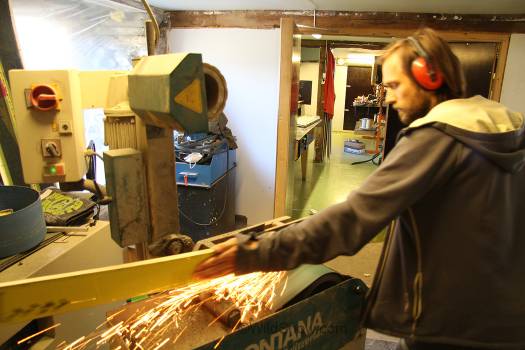
Cutting mold flash and finishing are all done by hand. Large factories may automate this process at least up to the final tune. Endre’s method seems a bit time intensive but definitely imparts a hand hewn ethos to each board, and they literally are boards, in a good way.
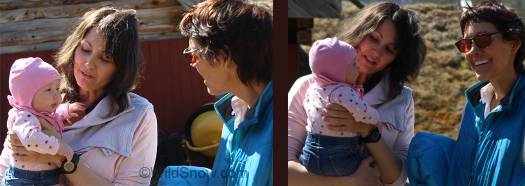
Oh, and check out what occurred later. Lisa showed up and got a big surprise (she loves kids). Endre and Elizabeth’s latest addition to the Norway ripper population had Lisa (on the right) and I wanting to stay and be guest grandparents. They’ve got two other young children as well, daughters so cute that we need to warn off any single freeriders from visiting, as you’ll want to immediately partner up with a better half and have a few kinder for yourself. Endre claimed the youngest was a handful and they were ready for a break. We considered buying another set of airline tickets just to do some baby sitting.
If you’d like to acquire a pair of Evi or Prog skis, simply contact Endre EVI and Prog skis website, Norway ski touring.. While his skis are not intended as bargain planks but rather as something fine, Endre told me that shipping from Norway to North America is surprisingly inexpensive.
WildSnow.com publisher emeritus and founder Lou (Louis Dawson) has a 50+ years career in climbing, backcountry skiing and ski mountaineering. He was the first person in history to ski down all 54 Colorado 14,000-foot peaks, has authored numerous books about about backcountry skiing, and has skied from the summit of Denali in Alaska, North America’s highest mountain.

